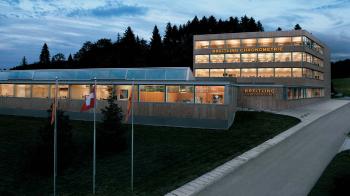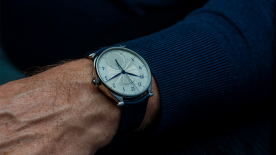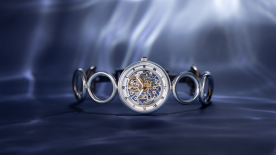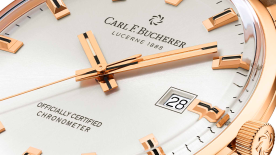You might think that if you’ve seen one watch factory then you’ve seen them all, but you couldn’t be further from the truth. One of the most intriguing aspects of reporting on the many watch brands based in Switzerland is that none of them have the same approach to producing a watch. The individual elements required are the same for all brands, of course, but there are always a number of differences between the brands when it comes to how they organise their production.
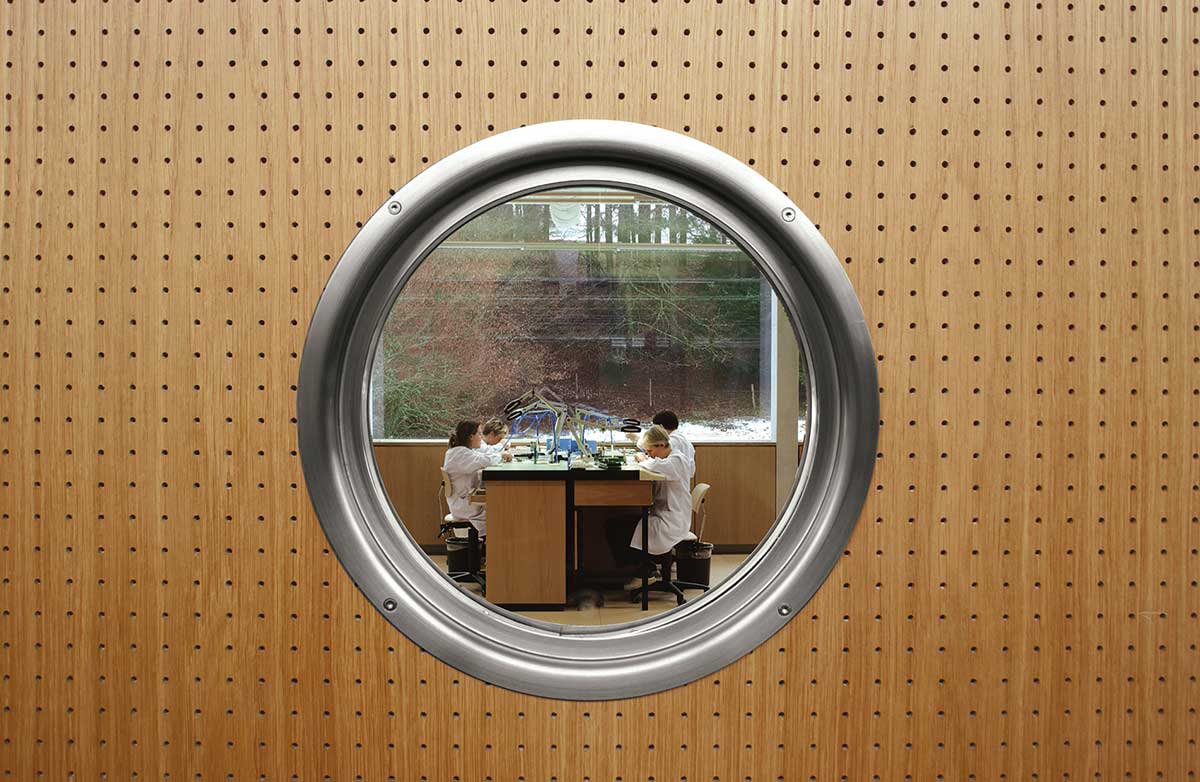
A recent visit to Chronométrie Breitling in La Chaux-de-Fonds was no exception. The first thing that struck me is that the core elements of the movement, the mainplate and bridges, are produced on a fully-automated line of Modulo CNC machines from Fleury, based in Bienne, Switzerland. Anyone used to seeing CNC machines will be impressed by the much smaller size of these machines, as well as the fact that they are “daisy-chained” to allow the components to be produced without any human intervention. In fact they run 24 hours a day. The total time required to produce a mainplate is 90 minutes, but because there are ten machines working simultaneously, each performing a specific operation, Breitling is capable of producing a mainplate every nine minutes.

The machines mill the plates and bridges from blocks of brass and drill the holes required for jewels and screws. It is quite eerie to see just one of the 180 people that work at the La Chaux-de-Fonds site in this machine room during a visit, but the availability of experienced machine operators is nevertheless vital. If any of the machines detects three consecutive problems with a part after it has completed its operation (for example, if one of the holes is outside the tolerance of plus or minus three microns), then it will stop and will not work again until the experienced touch of a sentient being has put things right. Furthermore, the final component from each production run is measured and its precise dimensions are recorded in a database as part of something that is called “statistical process control”, which allows a computer to detect trends in the machine’s production and alert machine operators to potential problems in advance.
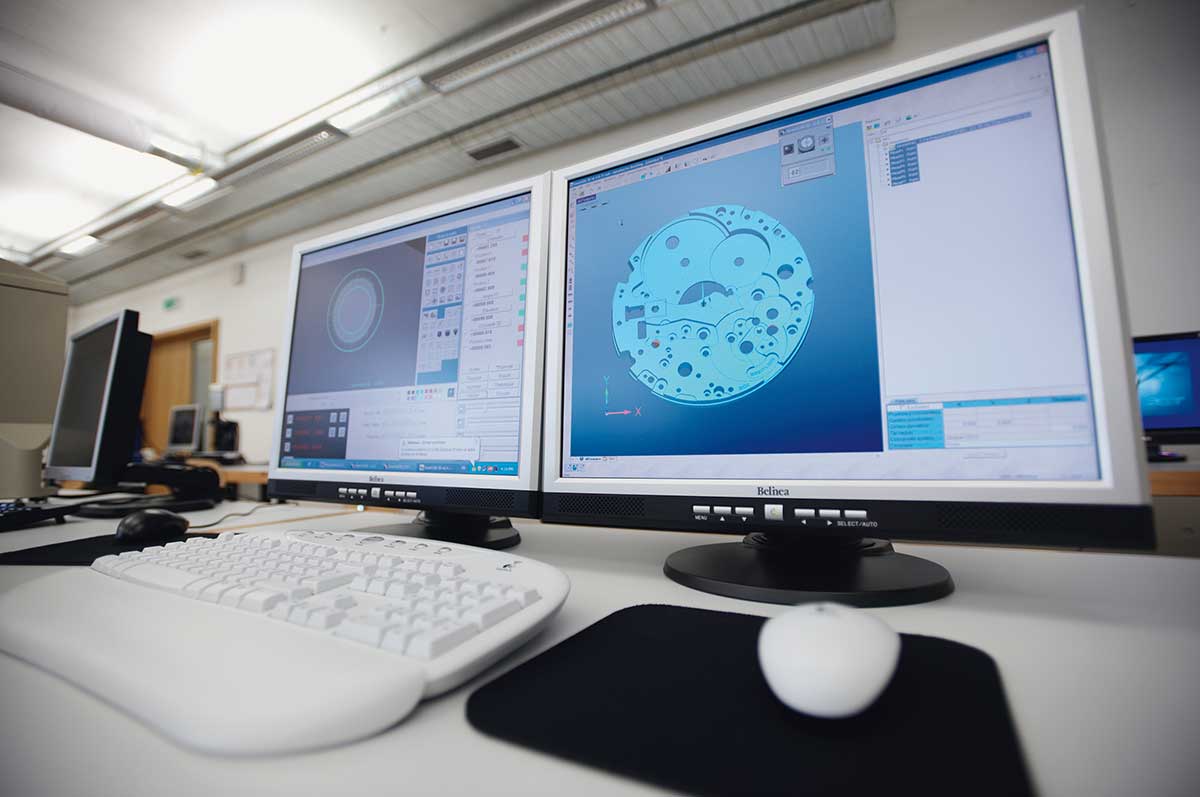
All components that come off the Fleury Modulo line go into a high-pressure deburring machine, where they are blasted with water at a pressure of 300-400 bar to remove any traces of machining, then sandblasted. The individual components are then pre-assembled into kits, reducing the 346 individual components in the in-house B01 calibre, for example, to 76 elements of a kit and 41 screws that the watchmakers have to assemble by hand. These kits are fed into a semi-automated production line by CLA, a company based in Delémont, in the Swiss Jura, that specializes in intelligent conveyor systems and represents the state of the art that is now found in a number of watch factories. Here the movement travels in its own personal transport container with an RFID (radio frequency identification) tag to identify it. Watchmakers carry out a specific task at different machines, all of which are interconnected, starting with the wheels and bridges, then moving on to the lever and pallets, followed by the barrel, the clicker, the escapement, the chronograph and any additional functions required. Fully automated machines in this production line are responsible for checking clearances and lubricating the movement. At the end of this line, once every movement has passed the necessary checks, a label is printed to identify it for the COSC, since every Breitling movement is certified as a chronometer before being fitted into a watch.
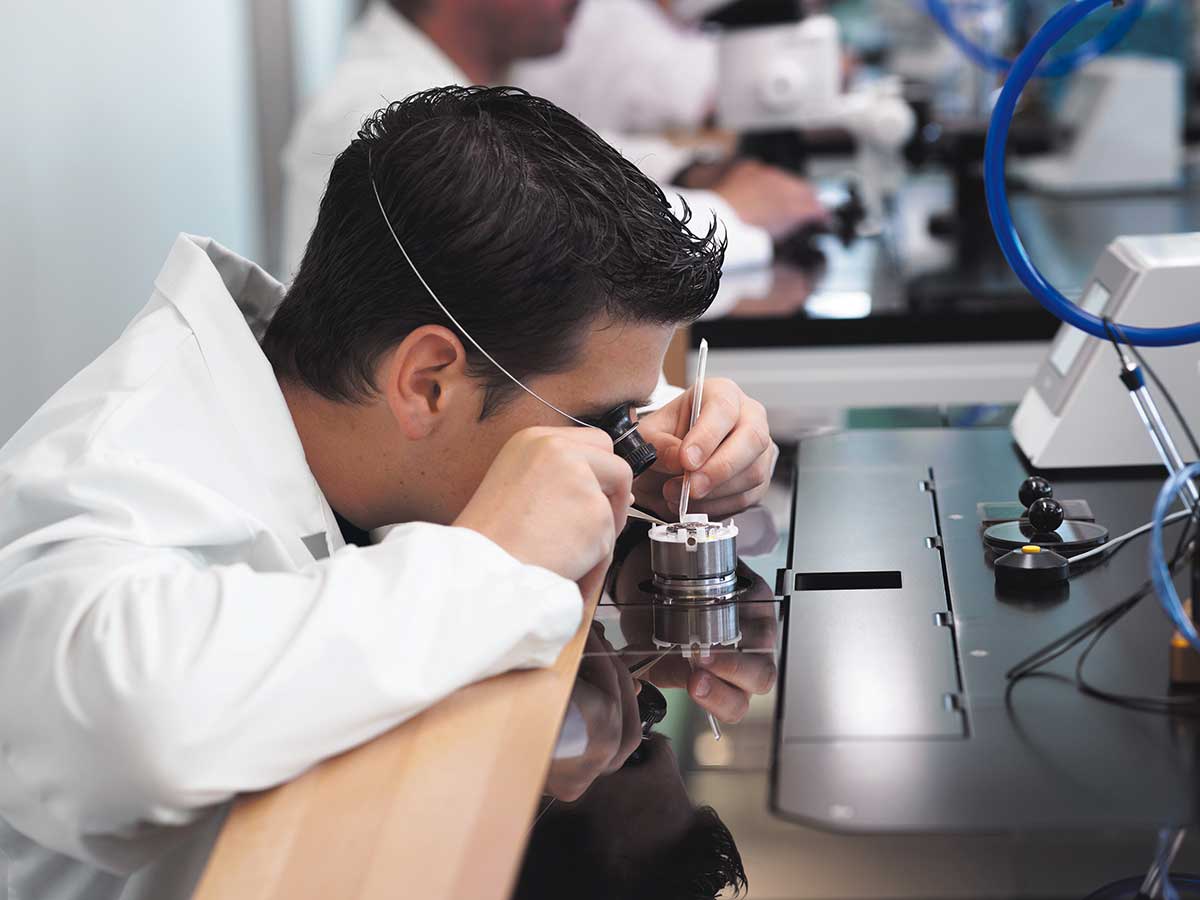
Although Breitling outsources the production of its cases, dials and hands, as well as the springs for the movement (although it can make its own balance wheels), every component received from external suppliers is subjected to rigorous quality control checks. The concentration on the quality and precision of the movement is impressive. Aside from the high level of automation and quality control mentioned above, the company also has its own in-house laboratory for research and development and prototyping whose equipment can measure to tolerances far beyond those required in production. An electron scanning microscope with a magnification of up to 80,000 and a CLA VARIOcouple machine that can measure torque to a level below one micronewton are just two examples of Breitling’s commitment to precision.
